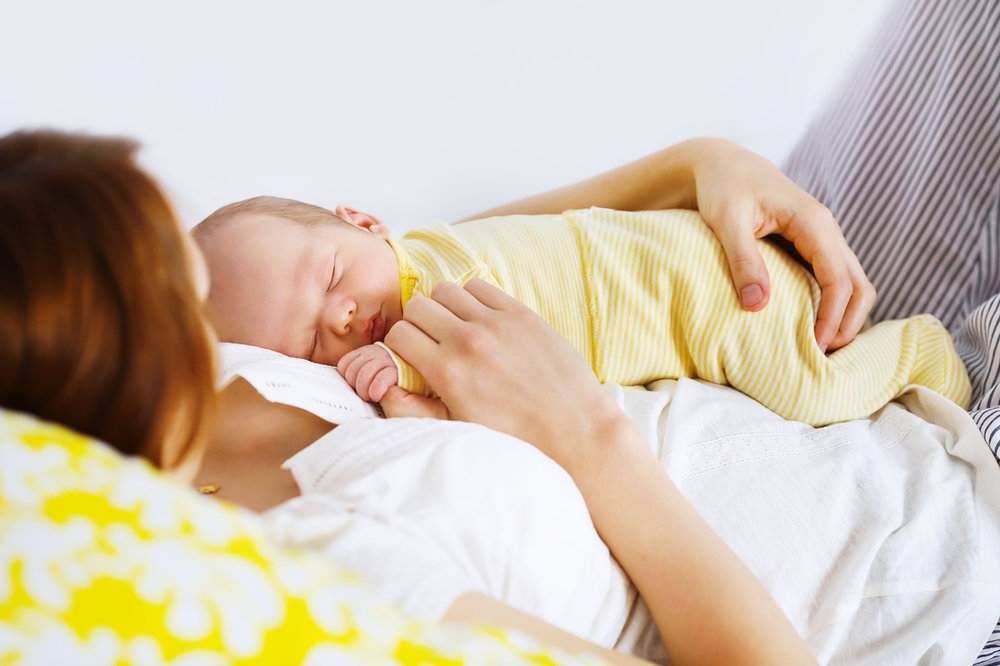5 necessities for quicker perineal healing after childbirth

A girlfriend once described the pain of childbirth like having your hand slammed in a door 10 times… and the feeling she had after delivering her 10-pound baby was like her insides were hanging out (which was probably not too far from the truth!).
Even if you don’t experience perineal tearing specifically, all the swelling and bruising caused by childbirth can range from uncomfortable to excruciatingly painful. It can take weeks, months, or even years to heal physically and emotionally from the trauma.
Here are our top five tips for postpartum comfort and perineal healing.
1. Have a perineal (donut) cushion on hand
Some women aren’t able to sit comfortably for weeks (or months) after delivery. This cushion can be a real lifesaver especially when you have to sit to feed your baby! You may not need to use it but it’s worth having at your fingertips just in case — hopefully it can be returned with the receipt at a later date if it’s unused and in original packaging.
2. Use botanicals and creams for topical support to speed the healing process
Witch hazel (or hemorrhoid cream) is another thing that doesn’t hurt to keep on hand just in case you need it.
Perineal healing herbs can be tremendously helpful for speeding up the healing process. Dr. Beverly Huang, ND suggests her recipe for botanical padsicles to promote tissue healing after childbirth. She also shares her mommy and baby bath recipe and topical healing brew tea to promote perineal healing.
3. Switch out the TP for a squeeze bottle and wet wipes while you’re healing!
Toilet paper can be so dry and uncomfortable on your tender parts. Keep a package of wet wipes in your diaper bag or purse. I liked bamboo wipes best but there are a number of options, including Tucks brand and using witch hazel.
Dr. Beverly’s topical healing brew tea for cleansing and soothing the perineum, can be kept in a squeeze bottle on the back of your toilet or frozen in a peri bottle and used as a cooling spray on the perineum.
4. Use painkillers that works for you, period
Dr. Beverly recommends considering Arnica and Hypericum pellets for pain management: “Arnica can help with bruising and achy pain following delivery and Hypericum can help with sharp shooting pain”.
My first childbirth marked the beginning of my use of homeopathic remedies. I was open to all forms of tricks and medicine for purposes of childbirth as well as postpartum, but found that traditional painkillers were less effective than natural pain relievers! On the advice of my healthcare providers, I took the following pain relief postpartum:
• Immediately following delivery, Arnica 1M
• One hour later, Hypericum 200C
• Alternating 3 pellets under the tongue of Arnica 30C and Hypericum 30C once every hour.
I requested that my doctor list the homeopathic remedies that I intended to use for childbirth and postpartum on my medical chart, and also included reference to them in my birth plan (get one for free here), so that the nurses were comfortable with me taking them.
5. Do Kegel exercises daily (when it’s safe to exercise)
Some women are referred to pelvic floor specialists for assistance with strengthening pelvic floor muscles (perineum muscles) and bladder control after childbirth. Kegel exercises can help promote perineal healing, and help with increasing bladder control and strengthening pelvic floor muscles.
According to Dr. Pam, kegel exercises be done each day by tightening your pelvic floor muscles, holding for 10 seconds then releasing, repeating 3-4 times (the link to her posts on postpartum care are here).
Find out more about postpostpartum care here including perineal tearing during childbirth, how to avoid it, and how to best heal from it.
Sleep is so important but the optimal amount is different for each family member.
It depends on age and other factors.
Find out the healthy sleep ranges by age, for you and your growing family.
Starting with babies (newborn to one year),
toddlers, preschoolers, school aged
children, teens and adults.
Guide to optimal family sleep (daytime naps & at night)
FREE download
Be the first to know about special
offers and resources
for our community only.
Don't miss out!
Become a Calm Parent Insider
FREE gifts & resources
CALMMOTHER LIMITED © 2023 | ALL RIGHTS RESERVED
terms | privacy | contact
Simplifying life for parents so you can focus on what matters most to you.
Live your best life with kids!
+ Show / Hide Comments
Share to: